Animal
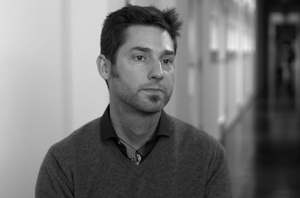
Section Chair: Felix Mark (Alfred Wegener Institut, Helmholtz Center for Polar and Marine Research)
The Animal Section of the SEB has a diverse range of interests in whole-organism biology. But we are also interested at the links to cellular processes at lower levels of biological organisation, as well as associations between physiology, locomotion, and behaviour in the context of ecophysiology or ecology. However, the core theme is the biology of the whole organism.
The Animal Section has a number of special interest groups covering different areas of animal biology that you are welcome to join. These interest groups help to organise sessions at our Annual Conference and our Symposia. Each interest group is headed by a group convenor, and the group convenors make up the SEB Animal Section Committee.
Why Become a Convenor?
Vacancies Open: Animal Respiration Group Convenor
Deadline for application: Monday 13th October
Convenors play a crucial role in shaping the SEB scientific community. By leading a Special Interest Group (SIG), you will:
- Influence the field: Organise symposia, workshops, and networking events that bring together leading scientists.
- Expand your professional network: Collaborate with experts, industry leaders and help build a community within your specific research area.
- Enhance your leadership skills: Gain experience in managing scientific programs, marking grant and award applications, and steering research discussions.
- Boost your career: Demonstrating leadership within an international scientific society is a strong asset for career progression.
Role Description: Download the full Convenor role description here.
Below is the list of animal biology interest groups, use the button below to log in to the members' area and join a group:
Animal biology interest groups
Animal Biomechanics Group
Convenor: Pauline Provini
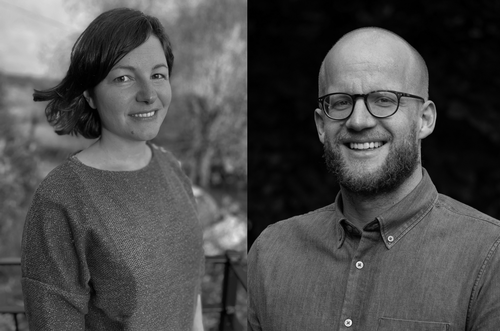
Pauline Provini is a permanent researcher at the National Museum of Natural History (MNHN) in Paris, France. Her research, which combines 3D kinematics and shape analysis in a phylogenetic context, aims to gain insight into the evolution of vertebrate form and function. She is particularly interested in the functional morphology of avian locomotion and song. During her PhD, she emphasised the prominent role of the legs in the evolution of avian flight and locomotion in general. She continued her research on avian locomotion as a postdoctoral fellow at the Universidade de São Paulo, Brazil, where she studied the anatomy of avian hind limbs to better understand the evolution of hopping and walking locomotion. In 2020, she was awarded a long-term fellowship from the Centre for Research and Interdisciplinarity in Paris, France, to develop her team. Her group, currently based at the MNHN, is investigating the biomechanics of birdsong and complex communication, one of the amazing abilities we share with birds.
Deputy Convenor: David Labonte
David is a Reader in the Department of Bioengineering, Imperial College London. In his research, David combines his two main passions: his love for animals, and his admiration for physics. Together with his group, he investigates the influence of mechanical constraints on the performance, behaviour and evolution of arthropods (and sometimes larger animals or even plants!). Every day, David is deeply grateful that he has a job in which he can follow his
interest, and that he gets to work with and learn from the passionate members of his research group.
Group description
Biomechanics is the study of mechanical principles in biological systems, ranging from the molecular to the organismal level, and beyond, including interactions with the environment. As such, the Biomechanics Group of the SEB brings together scientists from a wide variety of disciplines, including zoologists, botanists, molecular biologists, physiologists, kinesiologists, mathematicians, engineers, biomimeticists and computer scientists.
The SEB Annual Conference includes 3 to 4 days of Biomechanics presentations. We have an Open Biomechanics session, spanning several days, that consists of talks and posters on the application of biomechanics to any topic, including swimming, flying, terrestrial locomotion, feeding, functional morphology, muscle-tendon mechanics, damage and repair of materials, in animals and plants. We also run special topic sessions, of which rece
Animal Ecophysiology Group
Convenor: Erika Eliason
Deputy Convenor: Nedim Tüzün
The aim of the ecophysiology interest group is to promote interactions between scientists who are interested in, or study, the physiology of individual animals in an ecological context, with an emphasis on the implications of that physiology for ecological processes – such as survival, fecundity and geographical distributions. This includes several key areas of research:
-
The physiological processes that are involved in life history trade-offs. In particular the roles that may be played by metabolism and oxidative stress in trade-offs associated with survival, fecundity, growth and senescence throughout ontogeny.
-
The factors that influence energy demands of free-living animals and how these relate to foraging, predator-avoidance, social interactions and reproductive investment, and affect wider aspects of biology including population ecology, spatial ecology and geographical distributions.
-
The use of modern omics technologies in non-standard organisms to understand physiology in settings outside the laboratory.
Ecophysiologists take the view that physiology is a factor that cannot be ignored when attempting to understand the ecology of organisms. A key aim of the group is to bring together ecologists and physiologists who have an interest in using physiology as a tool to understand ecology.
Animal Osmoregulation Group

Convenor: Carolina Freire (Federal University of Paraná, Brazil)
I am Brazilian, and since 1996, I have been a faculty member at the Federal University of Paraná (UFPR), located in Curitiba, Southern Brazil. As a marine biologist from the Federal University of Rio de Janeiro, with a Master of Science (USP, Brazil) and a PhD in Animal Physiology (Cornell University, USA, 1996), I work on the osmoregulation of aquatic animals, especially crustaceans, fishes, and echinoderms, but also molluscs. My interest has recently been directed towards the effects of climate change, bioinvasion, and the physiology of native species aimed at small-scale integrated multitrophic aquaculture.
Deputy Convenor: Marian Hu (University of Kiel, Germany)
I am a marine biologist and physiologist running my research group at the Institute of Physiology at the University of Kiel in northern Germany. I received my Diplom in biological oceanography from the University of Bremen, Germany. In 2008 I continued my research with a PhD thesis at the Helmholtz-Centre for Ocean Research Kiel (GEOMAR) focusing on the acid-base physiology of cephalopods. After completion of my PhD thesis in 2011 I was a post-doctoral fellow at the Sven Lovén Centre for Marine Sciences in Kristineberg, Sweden and the Institute of Cellular and Organismic Biology at the Academia Sinica, Taiwan. Here I studied the largely unknown mechanism of acid-base regulation in cephalopods and shallow water hydrothermal vent crabs. In 2015 I started to work at the Institute of Physiology (University of Kiel, Germany) as a researcher and lecturer in human physiology and developed the sea urchin larva as a model system to study membrane transport physiology of the gastro-intestinal tract and in mineralizing cells. Besides protein biochemical and molecular technologies, I use electrophysiology and life cell imaging techniques from human physiology to study membrane transport.
Group description
This group is interested in a broad spectrum of research that encompasses the field of animal osmoregulation. Ion-transport, acid–base balance, links between feeding and osmoregulation, toxicological effects on
osmoregulation, endocrine and neuroendocrine control of osmoregulation are just some of the topics that have been recently covered at sessions organised by our group at the Annual Meetings. These areas are investigated at a variety of different levels including in vitro techniques, gene expression, ion fluxes of whole animals and – central to our interests – the integration of other aspects of physiology with osmoregulation.
Examples of animals studies within our group include the Lake Magadi tilapia (Oreochromis alcalicus grahami), which lives in environments with pH as high as 9.9, a condition that would be fatal to almost all teleost fish. Oreochromis alcalicus grahami show a severe metabolic acidosis when placed in water of neutral pH, which interferes with their ability to produce urea. When drinking large quantities of the alkaline water in which it lives, Oreochromis alcalicus grahami protects its stomach with an anatomical side-pocketing of the stomach.
Environmental influences on osmoregulation are a major focus of our group. For example, the Amazonian cichlid, Astronotus ocellatus, is extremely resistant to hypoxia and has an amazing ability to regulate ion homeostasis during periods of low oxygen. During hypoxia, these animals avoid a marked disturbance of internal ion status by simultaneously reducing sodium pumping and leak rates at the gills.
Animal Respiration Group
Convenor: Johnathan Stecyk
Deputy Convenor: Christian Damsgaard
The field of respiration physiology studies organisms as a system of gas exchange that spans from the use of oxygen and provision of energy in the mitochondria and the cellular production of carbon dioxide, to the diffusive and convective transfer of these respiratory gases through multiple structures and compartments between organelles and the environment, water or air.
Respiratory physiologists detail mechanistic studies of respiration at all levels of biological organisation, as well as in integrating findings into a holistic picture of how animals function in their environment. Respiration physiology greatly benefits from the comparative approach, where variations in respiratory mechanisms employed by animals in different, often challenging environments, or with different lifestyles are used to elucidate fundamental principles of respiratory function.
Wide-ranging studies – from diving insects to air-breathing lungfishes to oxygen-depositing deep sea fishes, from hibernating frogs to running lizards and digesting snakes, and from high-flying birds to burrowing moles to deep-diving seals – have greatly increased our knowledge about the capacities and limits of respiratory mechanisms across animals. This is a key factor for assessing consequences of past and future changes in respiratory environments.
Comparative Endocrinology Group
Convenor: Christian Tudorache
Deputy Convenor: Erin Faught
This group is interested in all aspects of research in comparative animal endocrinology and conservation endocrinology, and has strong links with a number of the groups within the Animal Section. Interests include both vertebrate and invertebrate endocrinology and the plethora of physiological functions controlled or influenced by the endocrine system.
For example, the role of hormones in reproduction, the stress response, ion regulation, digestion, molting and development.
The group reflects current advances in comparative endocrinology such as reporting on the growing body of evidence that links manmade chemicals with endocrine disruption and the use of perturbations to the endocrine system in response to environmental stressors as a tool in conservation.
Conservation Physiology Group
Convenor: Marta Pimentel (University of Lisbon)
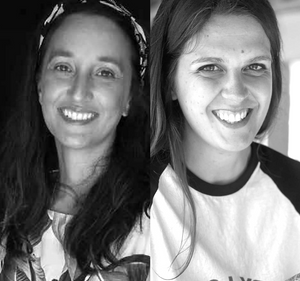
Over the last years, I have developed research on climate change and ecophysiology fields and seek to understand how future environmental changes affect marine biodiversity. As a Junior Researcher at MARE – Marine and Environmental Sciences Centre, Faculty of Science, University of Lisbon (Portugal) I am eager and highly motivated to contribute for better climate change research and to support policies for sustainable management strategies to protect marine biodiversity in changing oceans.
Deputy Convenor: Sophie Dupont (CEFE, France & CIBIO, Portugal)
I am concerned about the human print on surrounding vertebrates in the current changing world. Then, I have been involved in research projects aimed at discovering how variable/unpredictable/constraining environmental conditions influence individuals’ quality (using ecophysiological and behavioral markers) and shape their life-history decisions. Since January 2024, I’m a BIOPOLIS postdoctoral researcher at the Centre d’Ecologie Fonctionnelle et Evolutive (CEFE, France)/Centro de Investigação em Biodiversidade e Recursos Genéticos (CIBIO, Portugal), working on the effect of a fire event on telomere dynamics in the Sociable weaver.
Group description:
The exciting and emerging field of conservation physiology explores the physiological responses of organisms to anthropogenic -induced environment al change and attempts to determine the possible threats imposed by current and future conditions. Underpinned by ecological and physiological theory, conservation physiology takes a multidisciplinary and integrative approach that encompasses both field and laboratory-based research. It aims to determine and assess abiotic and biotic factors that impact upon the physiology and fitness of organisms providing the ability to both assess and forecast the responses of organisms to environmental change. Ultimately, conservation physiologists aim to assist in determining the degree of threat to organisms and so help to set priority areas for conservation action and management.
A key objective of this group is to bring physiologists, ecologists and conservation biologists together that have an interest in studies that are assessing and predicting the impacts of current and future human-induced environmental change on organisms.
The SEB together with Oxford University Press have seen a growing need for a scientific journal to cover this rapidly growing field. The journal Conservation Physiology was launched in 2014 and is now the leading journal in this area.
Neurobiology Group
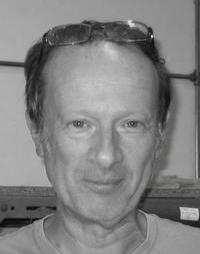
Convenor: Peter Hubbard
I did my Ph.D. at Sheffield University (UK), investigating renal handling of sodium by dopamine. Initiation into electrophysiology began during post-doctoral
work at Manchester University (UK) investigating Dahlgren cell activity using ‘sharp electrode’ recording, followed by patch-clamping on 5-HT3 receptors at the LMB (Cambridge, UK). At CCMAR (Portugal), I use in vivo and in vitro electrophysiological (and other) techniques to investigate olfaction in fish – especially pheromones, but also inorganic cations - and the physiological and behavioural responses to such odorants. My ultimate aim is to ‘trace’ the whole pathway from cause (sensory detection) to effect (physiological and/or behavioural changes) for widely different stimuli.
Deputy Convenor: Cosima Porteus
Group description
Neurobiology is a truly integrative science comprising molecular, genetic, neuroanatomical, physiological and behavioural approaches to understanding nervous system functioning at multiple levels of organisation. Events at the cellular level through to whole animal behaviour provide a holistic view of the neurobiology of all animal groups. Traditional methods of measuring nervous system responses using imaging, histology and electrophysiology are combined with contemporary genomic and genetic techniques to elucidate causal mechanisms of animal behaviour.
As a multidisciplinary group, neurobiology attracts scientists from a wide range of fields including anatomy, behaviour, comparative physiology, psychology, genetics and zoology (non-biomedical). The ultimate aim of the neurobiology interest group is to engage a diverse array of scientists who adopt different approaches with a common goal of addressing current topics in neuroscience, with a focus on evolutionary, comparative and ecological questions.
The ultimate aim of the neurobiology group is to engage a diverse array of scientists who adopt different approaches with a common goal of addressing current topics in neuroscience.
Thermobiology Group
Convenor: Fredrik Jutfelt
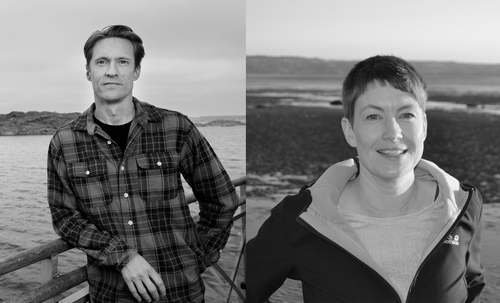
Fredrik Jutfelt is a thermal physiologist working on fish and other ectothermic animals. The main focus is on what physiological mechanisms limits organismal function during acute and chronic warming. Additionally, we investigate how animals can respond to climate change with thermal acclimation and adaptation.
Deputy Convenor: Julia Nowack
Julia’s research lies in the field of ecophysiology, with a focus on thermoregulation and energetics in mammals. She is particularly interested in the ability of animals to enter torpor, a strategy that allows certain mammal and bird species to reduce energy requirements and survive climatic challenges and energy shortages. Based in the UK, Julia holds the position of Reader (Associate Professor) at Liverpool John Moores University. Her current work primarily explores whether, and how, plasticity in behaviour and physiology may enable wildlife to cope with progressing climate change and urbanisation.
Group description:
Thermal variation is a reality for most animals and occurs over diurnal and seasonal timescales. Recent concerns of ‘anthropogenic’-induced climate change has sparked renewed interest in the thermal biology of animals.
The capacity of the genotype to produce distinct phenotypes under different environmental conditions is a widespread and powerful means by which animals can adapt to ensure performance and survival in a fluctuating thermal environment.
The Thermobiology Group is composed of individuals interested in the profound effect temperature, and other environmental factors, have on biological life. Our interests span all kingdoms and all life stages. A key objective of this group is to bring physiologists, ecologists and conservation biologists together to explore how animals interact and adapt to their environment.
Each year the SEB Thermobiology Group, in association with the Journal of Thermal Biology (JTB), hosts lecture at the SEB’s Annual Conference. The list of annual lectures is given below.
The Society for Experimental Biology (SEB) does not conduct any research on animals itself, however, SEB is committed to supporting and encouraging our members in an open and ethical approach regarding research where animals are involved. SEB encourages members to fulfill a duty to explain why and how animals are used.
If you want to learn more about how our members’ research is improving animal welfare in research, agriculture, and the wild, read this article: Advances in animal welfare by SEB members.
SEB is a signatory to the Concordat on Openness on Animal Research in the UK, which encourages our members to abide by the following commitments:
1. Be clear about when, how and why we use animals in research.
2. Enhance our communications with the media and the public about our research using animals.
3. Be proactive in providing opportunities for the public to find out about research using animals.
4. Report on progress annually and share our experiences.
